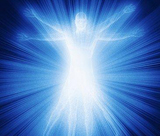Integral Health
The Metaphysical basis for Integral Health — illusionism and health
In Chapter V of The Life Divine, Sri Aurobindo makes a very significant comment on the illusory view of existence. There are certain spiritual experiences which hold that Reality or Brahman is only an undifferentiated pure consciousness (Being) or a fathomless zero (Non-Being) while ‘Existence’ as manifested in the cosmos and the individual is secondary, ‘unreal’, and hence an ‘illusion’. How is such an ‘illusion’ sustained? It has been traditionally suggested that such a ‘falsity’ exists due to a conceptual or formative phenomenon called Maya — the existence as we perceive is an illusory phenomenon that appears to be ‘true’ only to the subjective mind-space of the observer. What is the remedy? The conventional answer suggested is to get ‘liberated’ from the illusion (and hence from existence). Evidently, such a world-view would make the pursuit of health per se illusory and meaningless. If existence is considered to be an illusion, life itself would be an illusion and the pursuit of health and well-being would turn out to be in the long run a meaningless ordeal. Sri Aurobindo admits that the spiritual experience of Reality as pure Being or Non-Being beyond all existence has a certain validity but also points out that it is only one side of the Truth and hence a partial representation of Reality. The constructions based on that partial experience appear to be exaggerated, illogical and self-contradictory. In fact, The Life Divine counters the ‘illusionist’ model both psychologically and metaphysically.
The psychological contradiction of the illusionist model
Sri Aurobindo mentions two important psychological flaws of the illusionist view of existence:
1. He points out that an error is not necessarily an ‘illusion’. For example, as the human body is a ‘tangible’ reality, it is a common everyday experience to equate the ‘self’ or the ‘soul-principle’ with the ‘body’ (this is what the materialists do). Even a section of scientists try to understand the phenomenon of ‘Consciousness’ in primarily physiological terms. The spiritual view of consciousness surpasses the body. The materialistic view of identifying the body or physiological consciousness as the only reality is an ‘error’ of human perception and conception. An ‘error’ need not be equated with an ‘illusion’. An error has a chance to be corrected whereas an illusion needs to be rejected.
The sensory perception that the sun moves around the earth cannot be called an illusion in psycho-physiological terms because our bodily senses actually perceive the phenomenon. Yet this perception is an error when we go behind our senses and take a rational, scientific view of things.
Sri Aurobindo (1) clarifies further, “The snake-rope image cannot be used to illustrate the non-existence of the world, it would only mean that our seeing of the world is not that of the world as it really is.”(p.57) “The illusionist metaphors all fail when you drive them home — they are themselves an illusion. Identification with the body is an error, not an illusion. We are not the body, but the body is still something of ourselves. With realisation the erroneous identification ceases — in certain experiences the existence of the body is not felt at all. In the full realisation the body is within us, not we in it, it is an instrumental formation in our wider being — our consciousness exceeds but also pervades it, — it can be dissolved without our ceasing to be the self (2).“
2. The second psychological flaw is that the theory of ‘illusion’ of existence is merely a mental construct but the mental plane does not suffice to be the sole determinant of the destiny of the individual soul. Actually, the ‘mind’ finds it difficult to accept any higher principle of existence beyond itself and as such if it has at all to experience a ‘Reality’ beyond itself, the only plausible way is to get its functioning ‘dissolved’ or ‘abolished’.
However, Sri Aurobindo does not consider the ‘mind’ and its cognitive capacity to be the summit of the individual consciousness and that its sole destiny is to get itself finally dissolved. He advocates an evolution of consciousness beyond the mind and en-route the Absolute, a whole hierarchy of cognitive fields surpassing the ordinary mind can manifest. The ordinary mind need not be dissolved but can evolve so that ‘higher than mental’ ranges capable of progressively manifesting the Absolute become a ‘tangible’ reality. Thus, dissolution of the individual in the Absolute Reality is replaced by a manifestation of the Absolute Reality in the evolved individual consciousness.
The metaphysical contradiction of the illusionist model
Sri Aurobindo is very clear and bold in his metaphysical approach to Illusionism and is very explicit in exposing its self-contradictory standpoint. If ‘illumination’ of consciousness necessitates ‘dissolution’ of the individual, then the world will always remain a cruel ordeal of darkness, death and suffering!
“It is so that ascetic philosophy tends to conceive it. But individual salvation can have no real sense if existence in the cosmos is itself an illusion. In the Monistic view the individual soul is one with the Supreme, its sense of separateness an ignorance, escape from the sense of separateness and identity with the Supreme its salvation. But who then profits by this escape? Not the supreme Self, for it is supposed to be always and inalienably free, still, silent, pure. Not the world, for that remains constantly in the bondage and is not freed by the escape of any individual soul from the universal Illusion. It is the individual soul itself which effects its supreme good by escaping from the sorrow and the division into the peace and the bliss. There would seem then to be some kind of reality of the individual soul as distinct from the world and from the Supreme even in the event of freedom and illumination. But for the Illusionist the individual soul is an illusion and non-existent except in the inexplicable mystery of Maya. Therefore we arrive at the escape of an illusory non-existent soul from an illusory non-existent bondage in an illusory non-existent world as the supreme good which that non-existent soul has to pursue! For this is the last word of the Knowledge, ‘There is none bound, none freed, none seeking to be free.... Maya meets us even in our escape and laughs at the triumphant logic which seemed to cut the knot of her mystery (3).”
In fact, Sri Aurobindo asserts that the world is not illusory but our present perception of it is ignorant and therefore, the world ‘as seen by us’ appears as an illusion. This is reinforced by the perpetuation of suffering, ignorance, falsehood and the threat of death that looms always in the human horizon. “So far the Maya idea is true. But if we see the world as it really is, a partial and developing manifestation of Brahman, then it can no longer be described as an illusion(4).”
The synthetic viewpoint
Sri Aurobindo has not undertaken this whole exercise of denoting the limitations of Illusionism merely for the sake of a debate. He has no scores to settle with the proponents of Illusionism. His whole point in raising this issue has two cardinal objectives that would reflect the synthetic viewpoint:
1. The first objective is to establish ‘Trans-formation’ as a key-theme in the Integral perspective. In the Indian spiritual tradition, ‘Liberation’ has always been the password — a concept that gave birth to the idea that to experience Reality, it is necessary to be ‘liberated’ from the imperfection of earthly existence. Sri Aurobindo intends to manifest Reality through the ‘transformation’ of the imperfect earthly existence.
2. The second objective is to change the paradigm of ‘liberation’. Traditionally, liberation signified dissolution of the individual in the Absolute. Sri Aurobindo uses the term ‘liberation’ in the context of ‘dissolution’ of the ‘individual ego’ rather than the individual himself.
The dissolution of the ‘ego’ implied a disappearance of the ego-bound ‘personality’ in the ego- transcending dimension of ‘impersonality’. But Sri Aurobindo favours the continuation of the ‘illumined’ individual in the world-play. Classically, ‘illumination’ necessitated a dissolution of the ego and hence of the personality. As this was incompatible with existence, the theory of illusionism triumphed with the ascetics longing to be free from life. Hence, Sri Aurobindo had to give a different solution. If the individual has to continue in the world and yet be liberated from the ego-principle, then the ‘ego’ must be replaced by an integrated, harmonious, beyond-ego principle. In fact, this ‘fourth-dimensional principle’ replaces the ego to allow illumined individuals to continue in the world-play. This is a difficult endeavour but brings a new orientation to psychology. In fact, one of the main contributions of Integral Yoga Psychology to the world at large is the concept and technique of replacing the ego by the beyond-ego principle (termed in Integral Yoga as the ‘Psychic Being’), a phenomenon that is painstakingly unfolded in The Life Divine.
If existence (that includes the Individual as well as the Cosmos) at all is an illusion and liberation from existence is the sole destiny of the individual, then there is no meaning to human life, no worth in pursuing health, well-being, longevity, happiness. Sri Aurobindo rejects the illusory view of existence and replaces the concept of liberation by ‘Trans-formation’ to reinstate the meaning of life in terms that are positive, veridical, evolutionary and fulfilling. For the ultimate goal is not to reject the world as an illusion but to perfect the world in accordance with our cherished dreams and highest aspirations.
In replacing the illusory meaning of existence with a transformative paradigm, Sri Aurobindo’s integralist vision not only provides the meaning and significance of health in a world where the illumined individual has to continue a life of knowledge and action, it also indicates the central leverage in the pursuit of health and psychological discipline where the synthetic, ego-surpassing, fourth-dimensional principle (The Psychic Being) is the real harbinger of health and harmony and thus lays a valid foundation for the pursuit of Integral Health.
References
1. Sri Aurobindo. SABCL, Volume 22. Pondicherry: Sri Aurobindo Ashram Trust; 1970.
2. Ibid.
3. Sri Aurobindo. SABCL, Volume 18. Pondicherry: Sri Aurobindo Ashram Trust; 1970, p. 38.
4. Sri Aurobindo. SABCL, Volume 22. p. 48.
Share with us (Comments, contributions, opinions)
When reproducing this feature, please credit NAMAH, and give the byline. Please send us cuttings.





